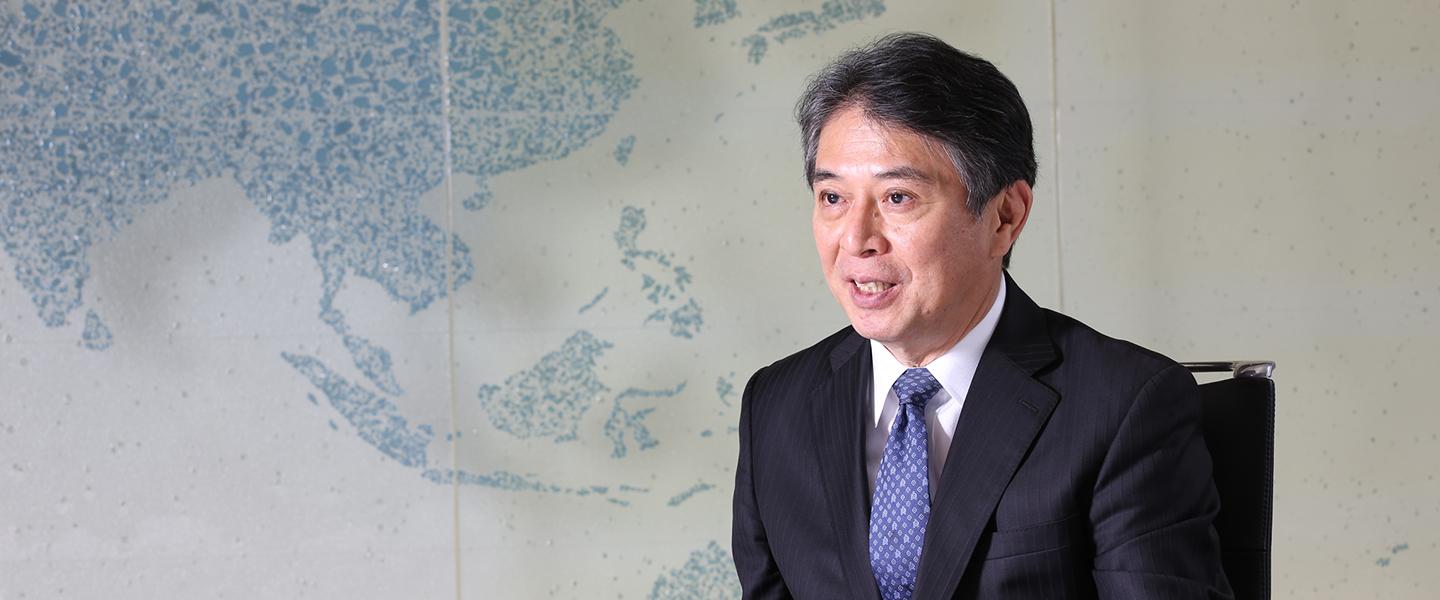
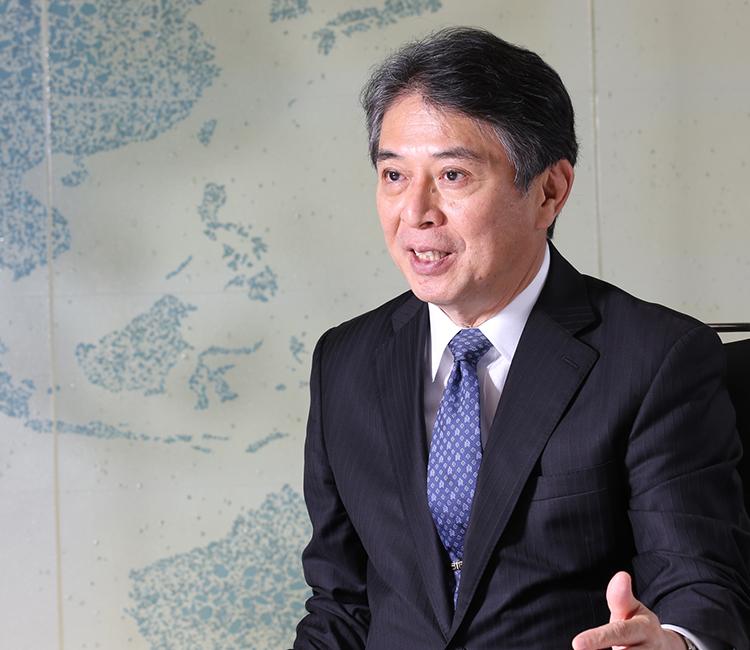
New businesses born from a long-term perspective and trust The DNA that AGC Cultivated and Challenges for the Future
- #Management Strategies
- #Spirit
AGC is a company that has been evaluated as one that embodies “ambidexterity.” Its history is full of challenges in new fields. It identifies next-generation fields capable of growth and establishes overwhelming superiority in the market through 10–20 years of material development. We asked Mr. Yoshinori Hirai, President, CEO, and Representative Director, about the company’s future business prospects and development policies.
Profile
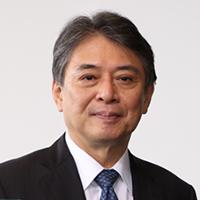
Yoshinori Hirai
Representative Director, President, and CEO AGC Inc.
1987 Ph.D., Graduate School of Engineering, The University of Tokyo. In 2008, he became the vice president of (then) Optrex, a subsidiary that manufactured liquid crystal panels, and in 2011, he became the general manager of AGC’s business development office. After serving as CTO in 2016, he assumed his current position in January 2021. He teaches several times a year as a visiting professor at Kyoto University. When he was a student, he wanted to be a physicist. He is a native of Fukui Prefecture.
“Ambidexterity” is a management concept advocated by Charles A. O’Reilly, a professor at Stanford University’s Graduate School of Business. AGC was recognized as a Japanese company that embodies this concept and was introduced in a case study at the aforementioned graduate school. “Although we have not been consciously practicing organizational ambidexterity, it is true that we have continued the challenge of taking on new businesses since the company was founded,” says Mr. Yoshinori Hirai, President, CEO, and Representative Director of the company.
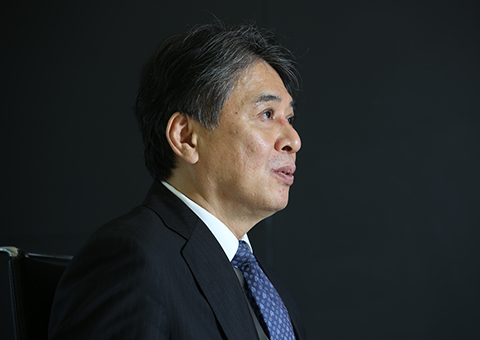
Yoshinori Hirai, Representative Director, President and CEO
Founded in 1907, the company began the mass production of architectural glass for the first time in Japan two years later. During World War I, it became impossible to import some of the raw materials and bricks used in furnaces, so the company took on the challenge of in-house production. “This is what ultimately led to our current chemical and ceramics businesses,” says Hirai.
During the period of high economic growth, the automobile and television markets grew rapidly. The company was one of the first to produce glass windows for automobiles and glass for cathode ray tubes. The spirit of contributing to new fields of growth through materials forms the foundation of the company.
Upon entering the 21st century, the old glass business, which was the mainstay of the company, began to stall. Glass substrates for liquid crystal displays grew rapidly, and although the business rapidly expanded, it was said that behind the scenes, management sensed a crisis.
Hirai says that when asked about the future of the display business by Mr. Kazuhiko Ishimura, who was president at the time, “I told them it could stall in a few years.” A year later, thanks to the success of glass substrates for liquid crystal displays, the company recorded its highest profit ever in 2010.
Business results were excellent. Why would he ask such a question at a time when everyone was obsessed with display substrates? Hirai is painfully aware of what the intentions were now that he himself has become president. At that time, the company relied on this business so much that some people even called it the “one-legged batting style approach.”
“In the materials industry, it is normal to take 10–20 years from the start of research and development to commercialization. That’s why we keep thinking of the next thing we can do before one business reaches its peak. We must always have our roots spread across multiple fields. This is our company’s DNA,” says Hirai. This is the foundation of the company’s reputation as the embodiment of “ambidexterity” by university professors in the US. A few years later, the use of glass substrates for displays bore fruit as a business, as Hirai predicted.
Hirai, who was entrusted by the president at the time to “grow a business that will become the pillar of our earnings in place of glass displays,” became the first head of the (then) Business Development Office, which was established to create new businesses. Even after being appointed as CTO in 2016, he has continued to be involved in the creation of new businesses as the person in charge. In 2016, AGC announced its long-term management strategy, “What We Want to Be in 2025,” under former CEO Takuya Shimamura. The company declared that it would position existing businesses, such as architectural and automotive glass and chemical products, as core businesses and that while building a solid earnings base in them, new businesses in mobility, electronics, and life sciences would be positioned as strategic businesses leading to future earnings expansion, with management resources being actively invested in them.
Examples of strategic businesses include chemically strengthened automotive glass for automotive instrument panels in mobility, EUV (Extreme Ultraviolet) exposure mask blanks in electronics, and a CDMO (Contract Development and Manufacturing Organization) business that undertakes processes from pharmaceutical process development to manufacturing in the life sciences. Hirai has been involved with many of these over the past decade.
Although the company has actively expanded its business portfolio, it does not dabble in just any field of growth. It has several policies for developing new fields.
The first policy is “We will not venture into unrelated territories.” The company does not delve into fields in which it cannot make the most of its existing technology and experience. The thriving life sciences business began with the company’s fluorine-based synthetic chemistry. The semiconductor field is also expanding to synthetic quartz and abrasives in a form derived from the company’s technology and experiences with glass substrates.
The second policy is “Commitment to B-to-B business.” Hirai says with a laugh. “We tried B-to-C business in the past, but it didn’t go well. I guess it didn’t suit our company culture after all.” AGC has focused on materials development and production since it was founded. The company has undertaken the development and production of pharmaceutical materials but has not become a pharmaceutical manufacturer, and it has remained firm in this stance.
In other words, AGC is unlikely to become its clients’ competition. That is why clients can develop new products together with them with peace of mind. When planning a model change or a new product, they always approach AGC first. The company’s asset is its ability to build such relationships of trust.
The third policy is to “Regularly make a profit.” Whether there is definite marketability from the perspective of macrotrends and whether AGC can demonstrate overwhelming strength through technological differentiation must be observed.
At the same time, whether the company can partner with clients who are overwhelmingly strong in a particular field is also an important indicator. “We value continuous earnings over short-term earnings. To that end, our technological capabilities and our relationships with our clients are two extremely important factors,” says Hirai.
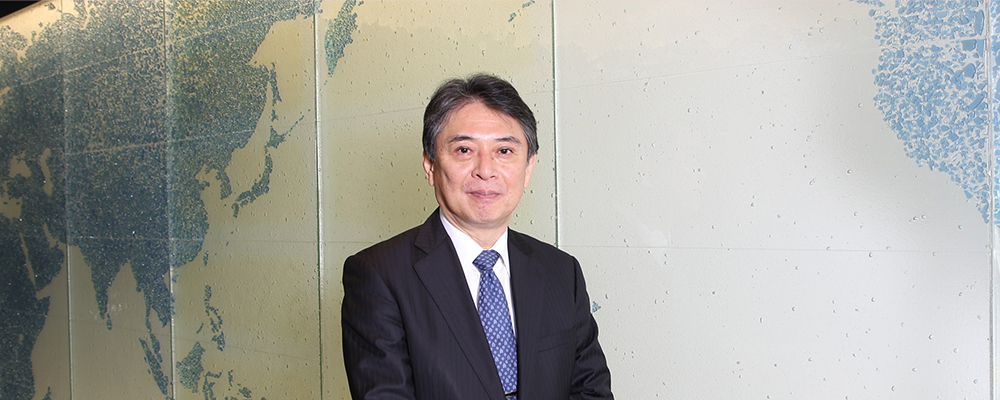
For example, the EUV exposure mask blanks business took about 20 years from development to mass production. It was said that there were no signs that it would lead to a mass production even 10 years after it began. Even so, work did not stop halfway through because “we predicted that the industry would grow big in the future once the market was established, and we analyzed that our strength in glass materials and processing technology were essential,” says Hirai.
The biotechnology business was eventually commercialized after 20 years of hardship. It is said that successive CTOs decided to continue development related to biotechnology even when there were no signs that it would become successful. “Everyone understands that taking on challenges is in our company’s DNA, and our policy is clear. Even if a CTO with a different field of expertise takes over, if we are thinking logically, our responses will still be the same,” says Hirai.
The (then) business development office developed new businesses and handed them over to the relevant business departments when they were about to be commercialized. Young people in their 30s were made to participate in them as a means of human resource development.
New businesses were separated from the business divisions because “it is difficult for a big new business that changes the business portfolio to emerge from an organization that manages existing businesses,” says Hirai.
Groundbreaking new technologies sometimes render existing products and technologies meaningless. In other words, from the perspective of divisions that support existing business, investing in new businesses can drag down existing businesses and lead to self-negation. Hence, new businesses have been under the authority of Head Office.
At the same time, wisdom and expertise are actively incorporated from different fields. In recent years, in addition to starting several close collaborations with universities, there has been an area for collaborative creation with external universities and research institutes, set up in the AGC Yokohama Technical Center, which opened in June 2021.
In terms of human resources, the company actively conducts mid-career recruitment and assembles human resources with expertise in different fields that are suitable for its expanding business portfolio. It has also conducted a considerable number of mergers and acquisitions (M&As) overseas in the last decade. When conducting M&As, it is important to note that acquisition for its own sake is not the goal. The company approaches M&As with careful consideration with a view to its integration into the AGC Group to maximize the impact.
The environment surrounding materials manufacturers is becoming more severe as the attention to SDGs (the Sustainable Development Goals Increases). Among them, a strategy for carbon neutrality by 2050 is an important issue for companies. In 2014, AGC set the goal of “reducing greenhouse gas emissions by six times with its products by 2020.” This was largely achieved by reducing energy consumption for air conditioning and heating through the use of insulating glass.
Meanwhile, decarbonization in the company’s production process has also become an important topic. All materials are created by adding energy to raw materials. In principle, the use of energy is unavoidable.
For example, it is necessary to heat up raw glass materials to 1600℃ in order to make them melt. The company has reduced the environmental impact of this by switching the fuel used from oil to natural gas, but technological developments, such as switching the heat source to electricity, are essential for further reductions. AGC has set the goal of achieving net zero carbon by 2050 in its medium-term management plan, which was announced this year.
“It takes 10–20 years to bring a single material to the market. A long-term vision and continuity are essential to the management of a material manufacturer,” says Hirai. What should be done in order to contribute toward the realization of a sustainable society? What is essential is taking on the challenge with a wide vision. CEO Hirai continuously faces the future in this way.
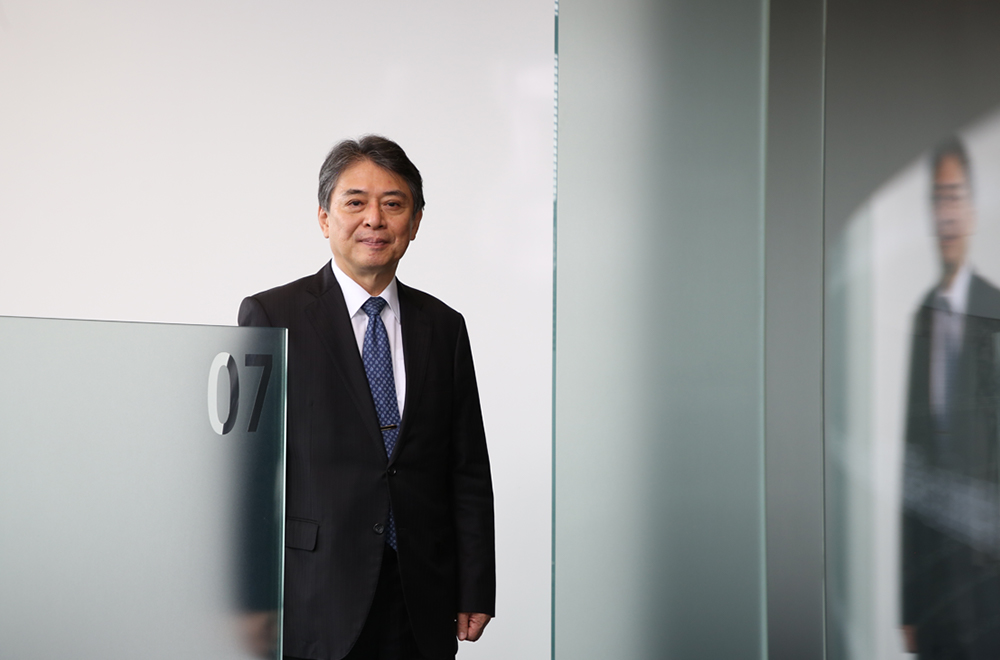
Reprinted from Nikkei Business Online Edition Special






